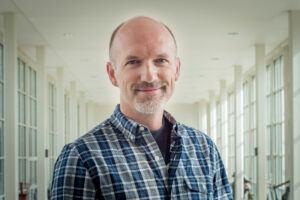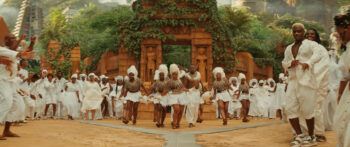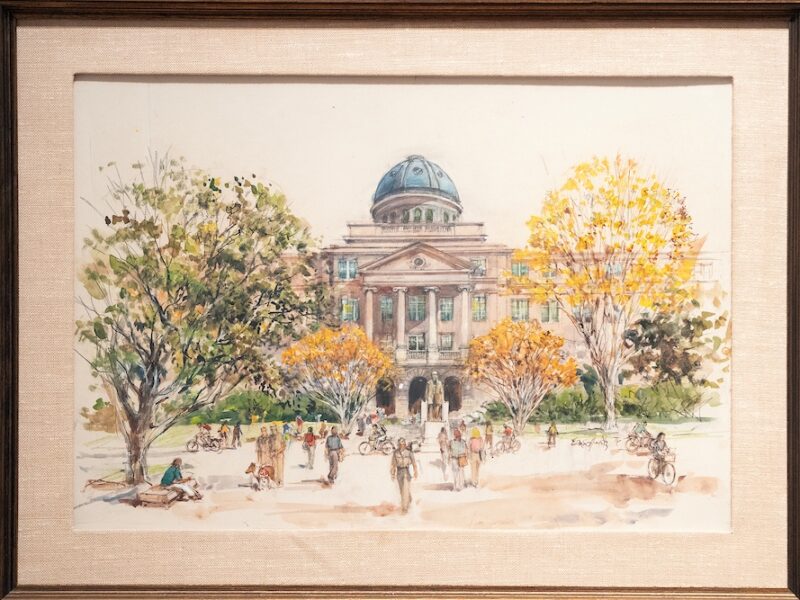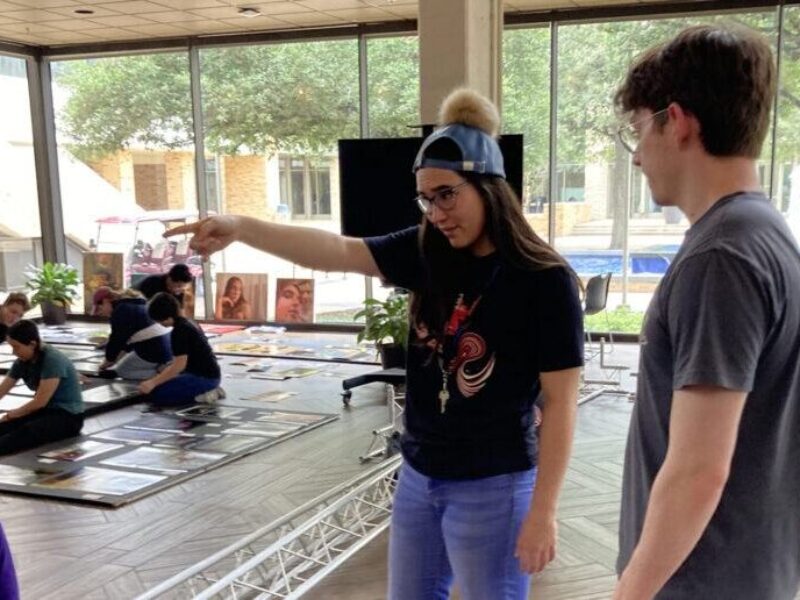Texas A&M Graduate Nominated For Oscar For ‘Black Panther: Wakanda Forever’

A groggy morning turned into a joyful one for Craig Hammack on Tuesday. The Texas A&M graduate awoke to the news he had been nominated for an Academy Award for his visual effects work on “Black Panther: Wakanda Forever.”
Hammack, senior visual effects supervisor at Industrial Light & Magic in San Francisco, said he was thrilled to hear the news — announced at 8:30 a.m. Eastern time — as he shook off the morning cobwebs.
“It’s hard to get in the right frame of mind at 5:30 to be overly excited about anything, but this is a real thrill,” he said. “These films are actually quite difficult to make, and this was definitely a particularly difficult and important one. I’m very happy for the hundreds of Industrial Light & Magic crew members that put in so many hours to get this done, to get the recognition for all that hard work.”

The Plano native graduated from Texas A&M with an environmental design degree in 1994 and then spent two years in the Visualization program, which is now in the School of Performance, Visualization & Fine Arts. He has spent the last 26 years at Industrial Light & Magic, starting as a technical director and moving up to his senior visual effects supervisor role.
The Oscar nomination — on which he is joined by Geoffrey Baumann, R. Christopher White and Dan Sudick — is Hammack’s second. The first was for 2016’s “Deepwater Horizon.”
He calls the “Black Panther” films “a real honor to get to work on,” and counts his experiences with director Ryan Coogler among his career highlights. His work on “Wakanda Forever” included the memorable beginning: the funeral procession for King T’challa, the title character, after actor Chadwick Boseman’s death in 2020.
“Shooting the footage with all the extras in costume dancing to the tribal song in the celebration of Chadwick … it was one of the first things we shot, and a great way to kick it off,” he said.
The Road To Aggieland
Hammack had an early connection to science and technology. His father, Hilton, was a space scientist who worked with digital control systems for space instruments. His mother, Brenda, worked in data analysis at the University of Texas at Dallas.
But computers truly sparked Hammack’s early interest. The Apple II Plus — an early ’80s staple — was especially important, he said, and introduced him to such games as “Ultima” and “Castle Wolfenstein.”
“Rudimentary graphics, but the games themselves were very creative, and a lot of the winning strategies involved creative solutions to problems,” he said. “It was all great fun and seemed like something very far beyond me, but there in my home to tinker with.”
The path to College Station was helped by Hammack’s older brother Davin, who was on campus majoring in electrical engineering. A love of math and drawing led Hammack to architecture and majoring in environmental design.
Hammack recalled Rodney Hill, his first design professor, teaching students how to think and how to learn to learn. The early morning class included a meditation technique to encourage a clear state of mind.
“At the beginning of every class we would lie on top of our drafting tables and go through a meditation story with him,” Hammack said. “It was like a quick power nap that was amazingly effective. That kicked off a love of conceptual thought and problem-solving that I kept through the program.”

After graduation, Hammack entered the Visualization program. He calls it “the perfect place at the perfect time for me.”
“It was new enough to feel experimental and encourage wildly diverse paths,” he said. “I quickly found that I wasn’t the best computer scientist there, or the best artist, but had enough of each to be successful.”
Hammack worked as the program’s webmaster and videographer, including documenting the building of the George H.W. Bush Presidential Library and Museum. He called the classes “intense but good,” and said that they had the added bonus of providing access to prime equipment.
“I soaked up everything I could and used my school projects to just play with various software,” he said.
Starting A Career
Industrial Light & Magic hired Hammack during his Visualization graduate studies, and he soon found his way from technical director to development and effects tasks, eventually moving into larger roles.
As senior visual effects supervisor, Hammack said his job is to achieve the director’s vision by partnering with the filmmakers. That includes working with a visual effects producer and previsualization supervisors on how scenes and background plates will be shot, laying the groundwork for the visual effects that come later. He then leads the effects work in post-production.
Hammack’s career has included working on big moments in big-budget films. Some of his favorites include the Coruscant city chase of Anakin Skywalker and Obi-Wan Kenobi in “Star Wars: Episode II — Attack of the Clones,” developing plane controls and effects for “Pearl Harbor” and effects for the mechanical spider in “Wild Wild West.” He worked with “Star Wars” creator George Lucas on “Red Tails” and with Oscar-winning director Brad Bird on “Tomorrowland.” And his travels have included Australia for “Thor: Ragnarok,” Uganda for “Black Panther” and Budapest for “Black Widow.”
On 1997’s “Titanic,” Hammack was responsible for underwater scenes including bubble and water dynamics as the ship plunged into the ocean depths, taking lead character Jack (played by Leonardo DiCaprio) down in its wake.
The plucky Jack makes his way back to the surface, but his later death scene continues to spark debate by fans: Was there room for him on the floating door he was clinging to while Rose (played by Kate Winslet) lay on it, waiting for rescue? The persistent theory even prompted director James Cameron to plan a National Geographic TV special to air in February for the 25th anniversary of the film that shows how the door could not have supported both characters.
Hammack noted that his work has included such unlikely scenarios as Indiana Jones surviving a nuclear explosion by hiding in a refrigerator, “so I’ve learned to go with the idea of movie physics when the story calls for it.”
“Having said that, James Cameron seems like a guy who cares quite a bit about those kinds of things, especially in such an important scene, so I’m guessing someone did the math,” he said.
Oscar Honors
Hammack described his Oscar experience for “Deepwater Horizon” as “pretty surreal.” The film — about the BP underwater drilling rig explosion in 2010 — was an under-the-radar candidate, he said, but the fire work involved was “some of the best that had been done.” The nomination led to press appearances and a lunch for the nominees.
“It’s all done very well to make you feel very special,” he said.
As for the 2017 ceremony, Hammack’s first memory is that his wife “looked absolutely stunning.” And he witnessed the all-time Oscar goof, the best-picture blunder when “La La Land” was initially declared the winner, before the mistake was corrected and the honor went to “Moonlight.” Hammack calls it “an odd twist on a pretty fantastic night.”
Hammack will experience the Oscar whirlwind again for his work on Wakanda, the fictional African country he helped to build first for “Black Panther” and then for “Wakanda Forever.” Hammack and the Industrial Light & Magic team created the country and its Golden City, a task that he calls a dream for a student with an architecture background.
“Afro-futuristic architecture to design and build,” he said. “City planning from scratch around cultural themes. It was all great fun and rewarding to realize and see it enjoyed on the screen.”
For “Wakanda Forever,” Hammack said he again worked on city design but on a street level, and an attack scene of the city, along with T’challa’s funeral procession. The film has grossed more than $840 million worldwide since its November release.
The Academy Awards are March 12 at the Dolby Theatre in Los Angeles.
A Foundation For Success
In looking back at his career, Hammack said that he’s been fortunate to be around “incredibly smart and talented people” on his movie adventures.
The same goes for his time in Texas A&M’s Visualization program, and he said he could go on for days talking about how professors influenced him and how much the program meant to him.
“I think the biggest part of it, though, was the culture and the privilege to be around such incredibly driven and passionate people that were so talented in creative things, but just so smart,” he said.
That includes students who went on to Industrial Light & Magic before him, he said, creating a trail for him to follow.
“People like Tim McLaughlin and John Walker, Kevin Reuter, David Hisanaga, David Parrish, Jason Rosson and so many more,” he said. “They had all been hired before me at ILM and were doing really well at establishing a reputation for the Viz Lab. By the time my turn came, the Viz Lab was a regular recruiting stop for all the major companies, and I think it was easy for them to take a chance on another Viz student.”
This article by Rob Clark originally appeared on the School of Performance, Visualization & Fine Arts website.





